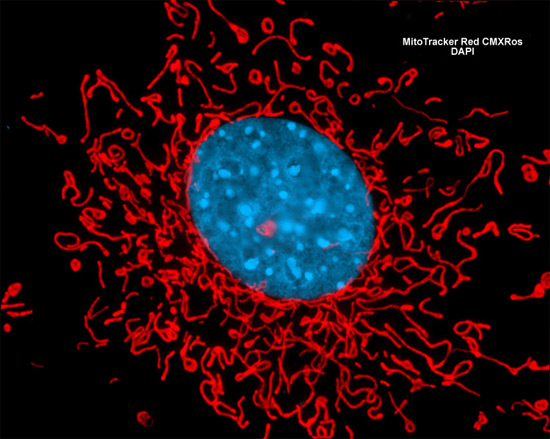The 3T3 embryonic albino Swiss mouse cell line is a standard fibroblast cell line employed in a broad range of scientific investigations and biomedical applications. The 3T3 cell line was established by George Todaro and Howard Green in 1962, at which time the cells were discovered to be unique from all other contemporary cell lines in that they were immortal without being oncogenic. Before the development of the 3T3 line, the research community generally thought that the capacity to induce tumors was tantamount to cell immortalization.
Embryonic Swiss Mouse Fibroblast Cells

The extensive mitochondrial network and its physical relation to the cell nucleus is clearly visible in the digital image of the 3T3 mouse embryo fibroblast presented above. In order to visualize mitochondria, an adherent culture of 3T3 cells was fluorescently labeled with MitoTracker Red CMXRos. Cell nuclei were visualized with 4',6-diamidino-2-phenylindole (DAPI). Images were recorded in grayscale with a Hamamatsu ORCA AG camera system coupled to a ZEISS Axio Imager microscope equipped with bandpass emission fluorescence filter optical blocks provided by Chroma and Semrock. During the processing stage, individual image channels were pseudocolored with RGB values corresponding to each of the fluorophore emission spectral profiles.



